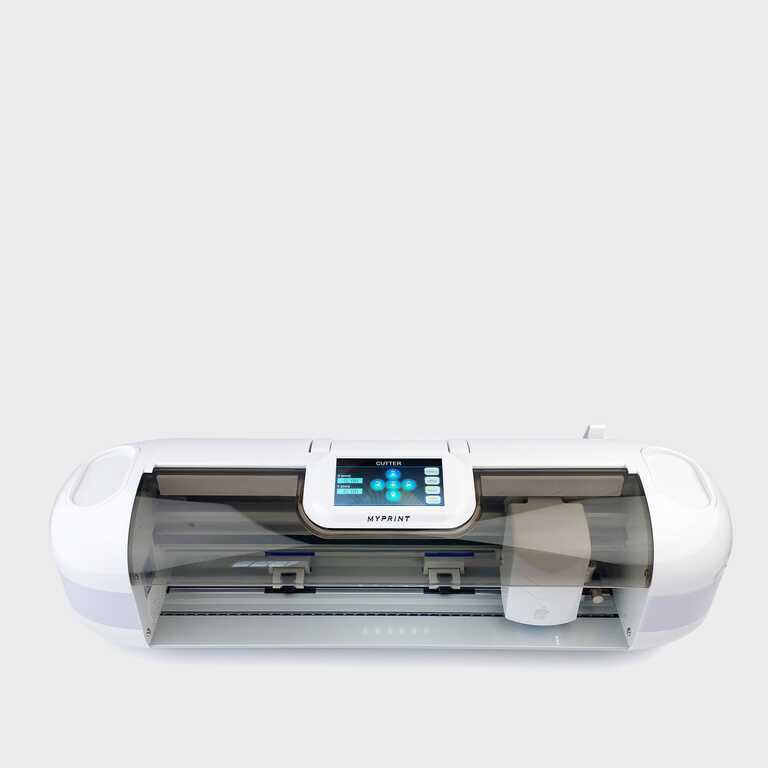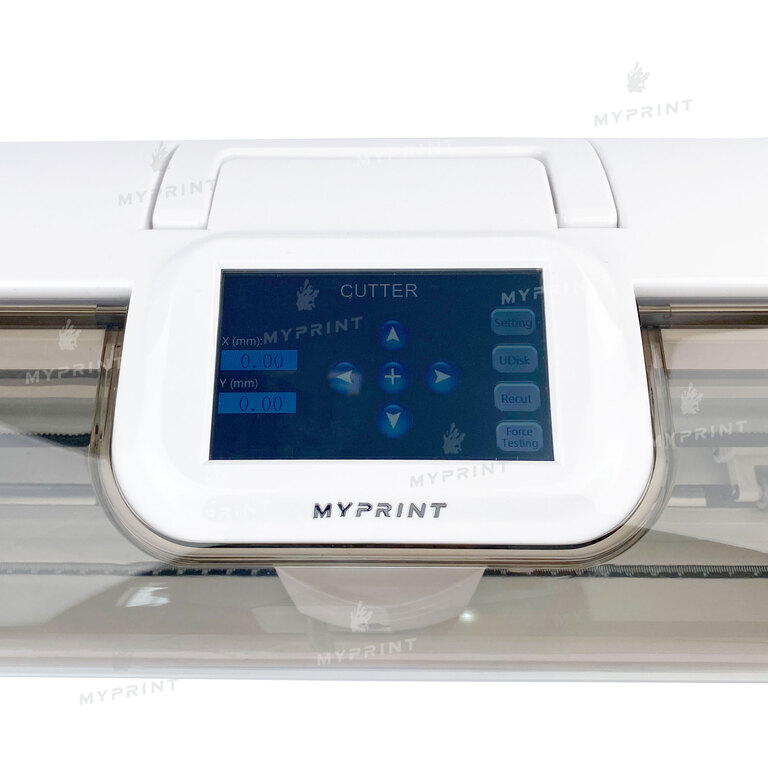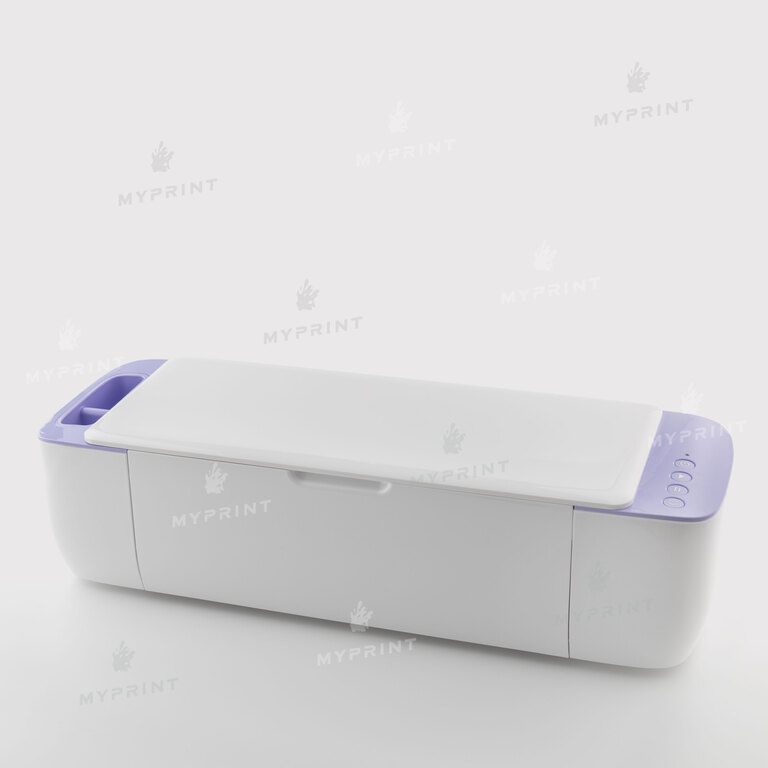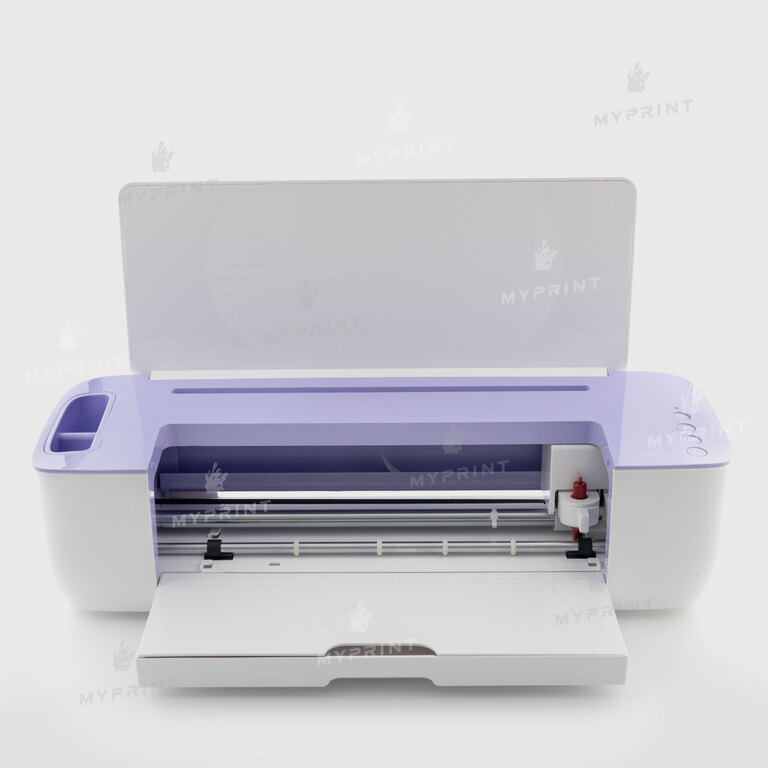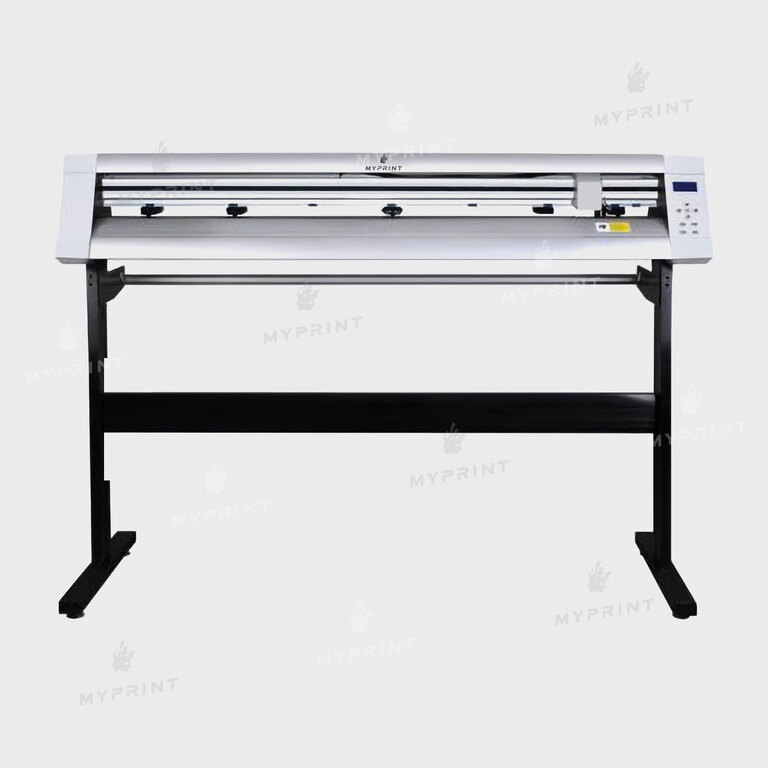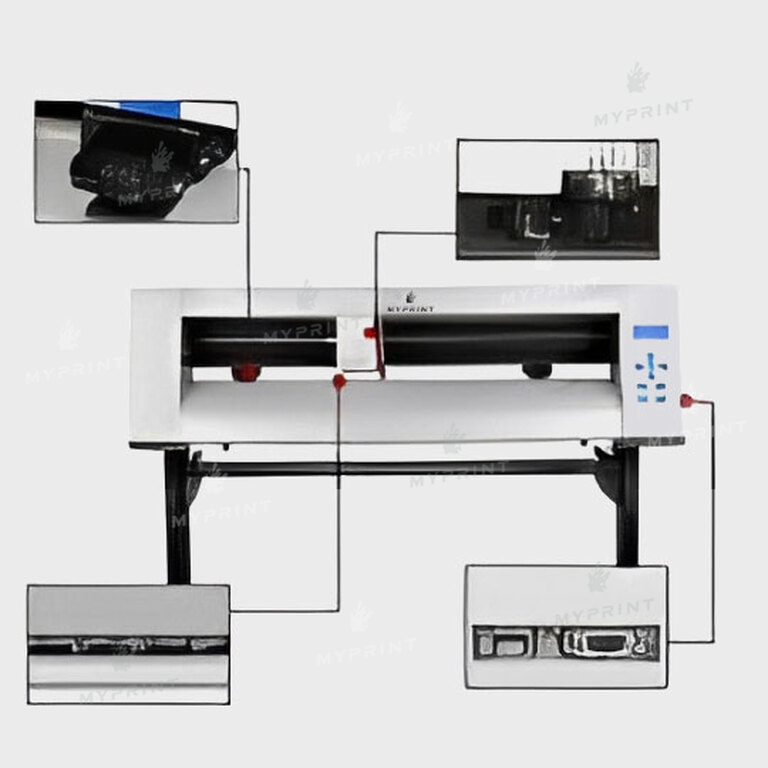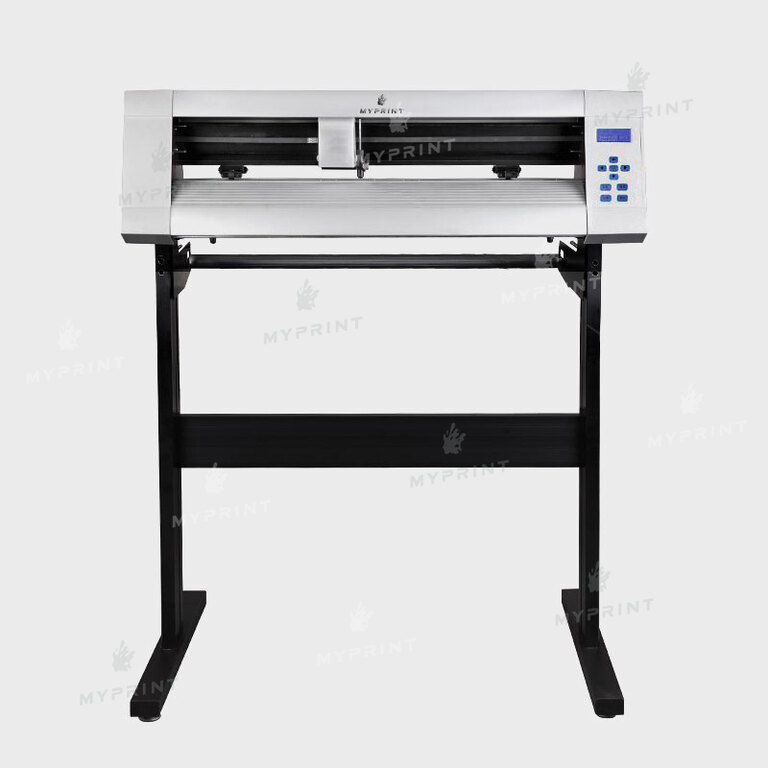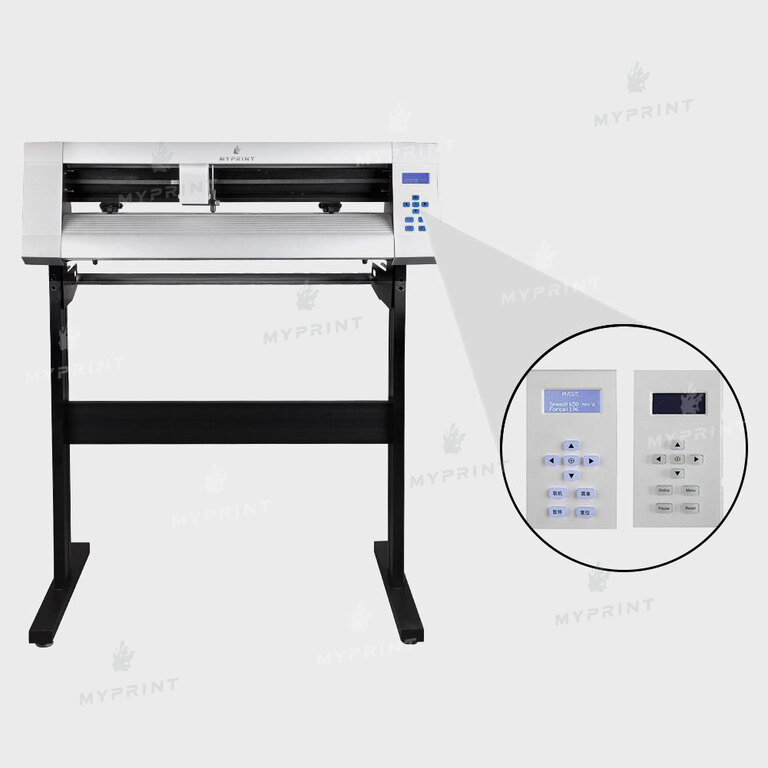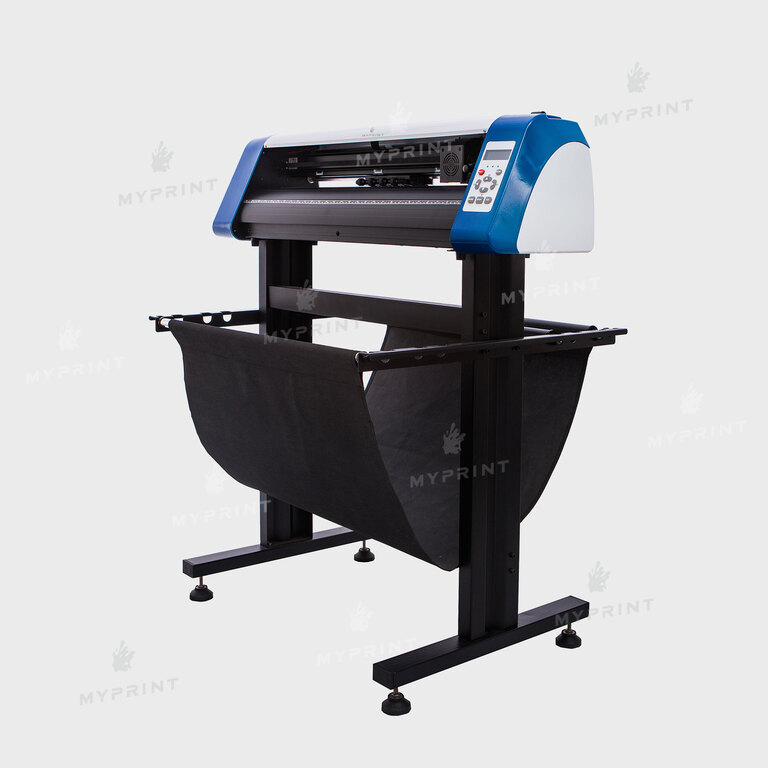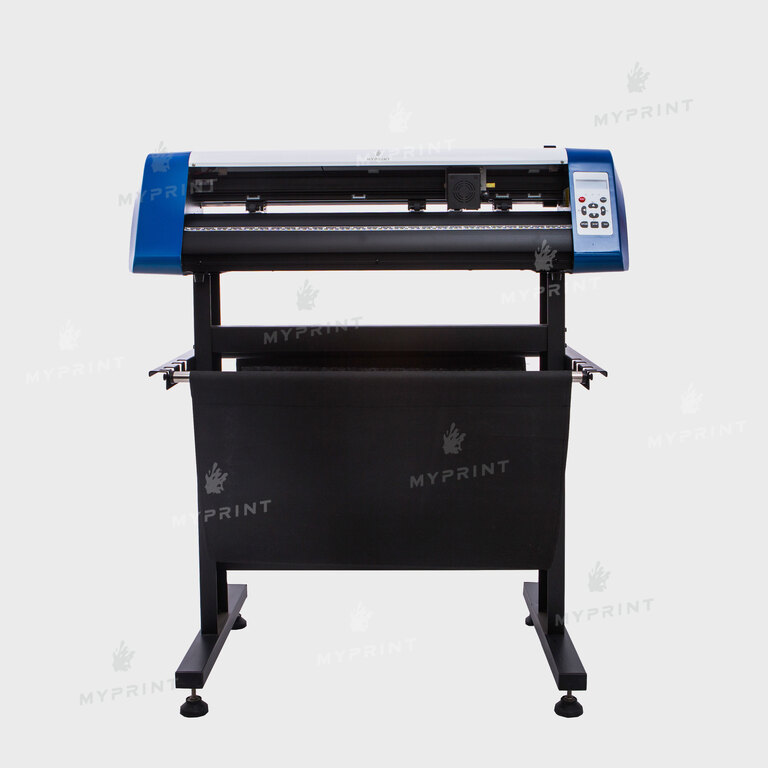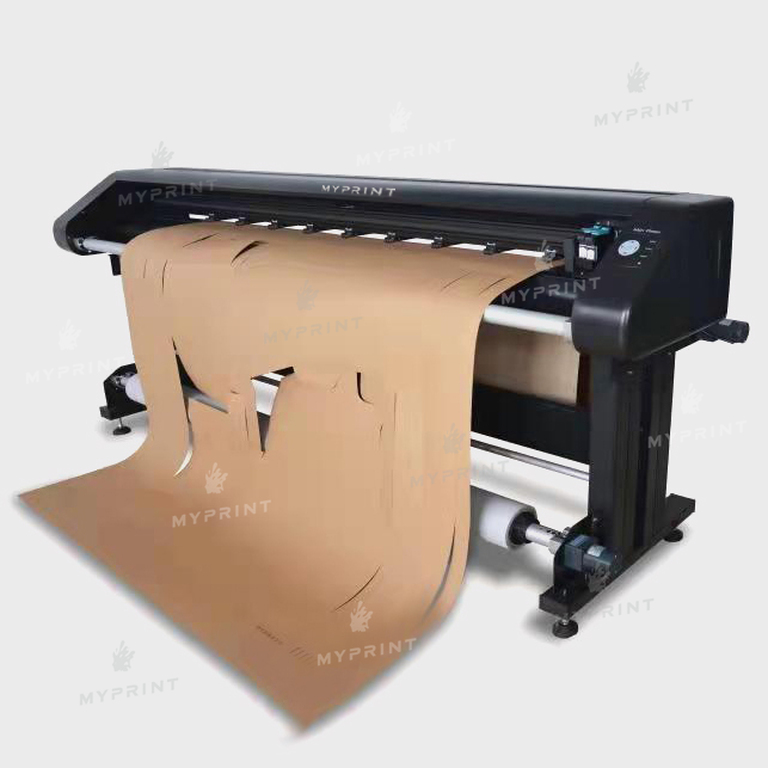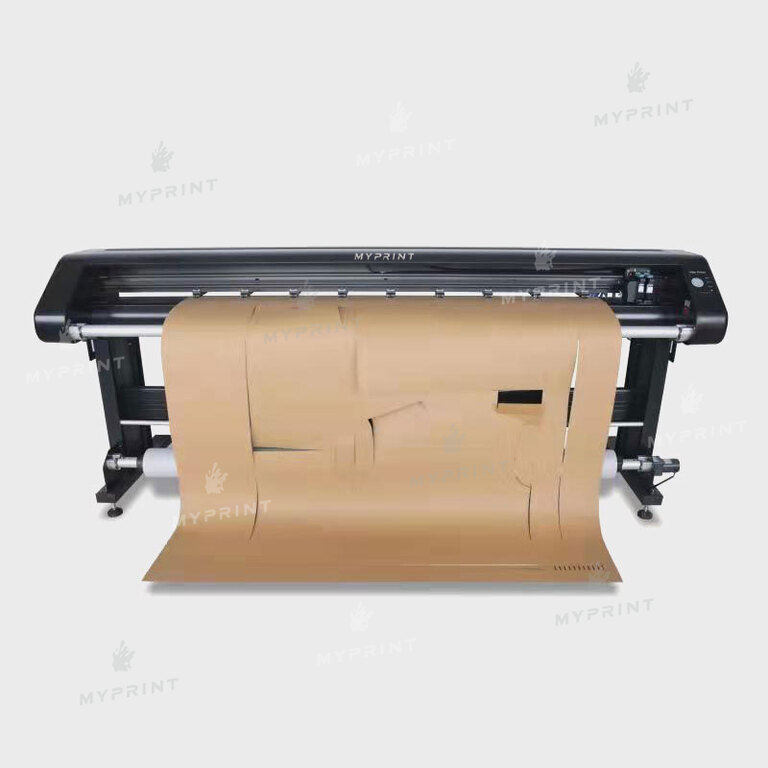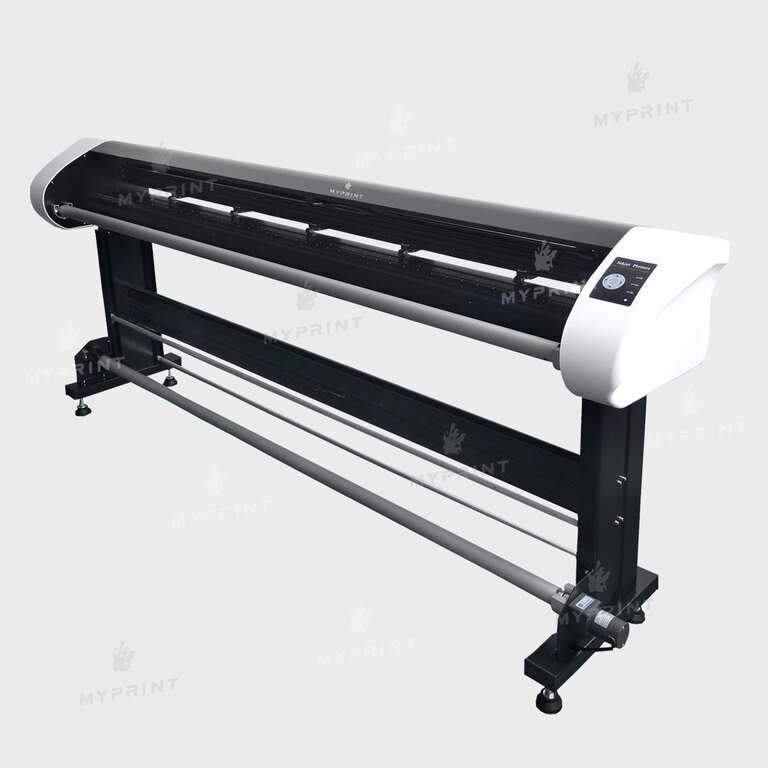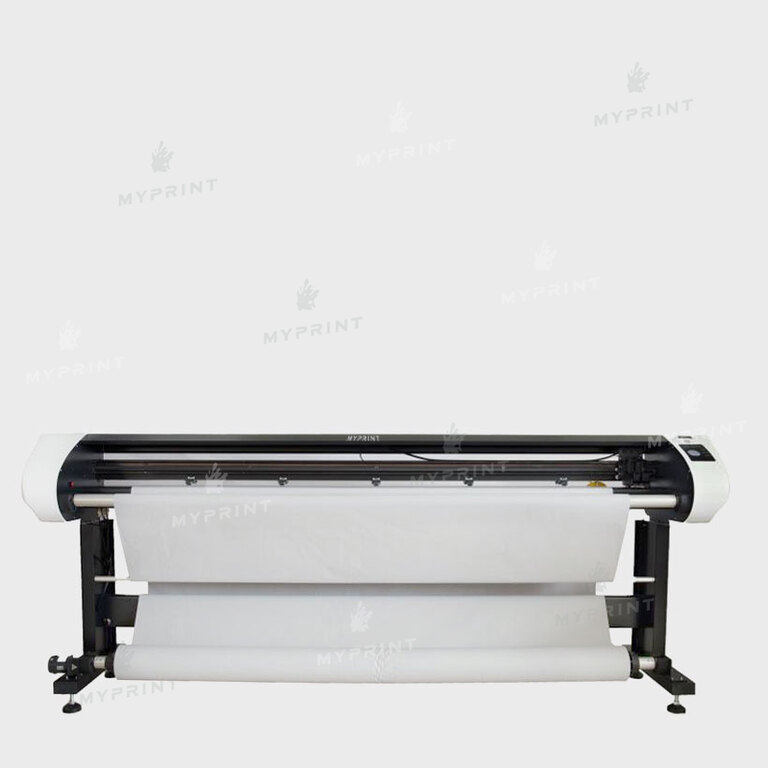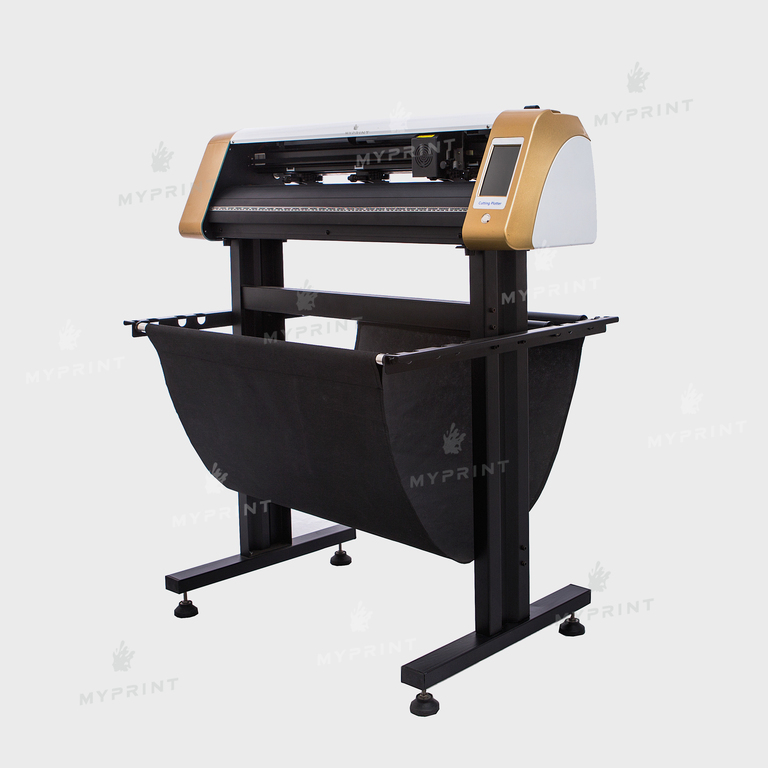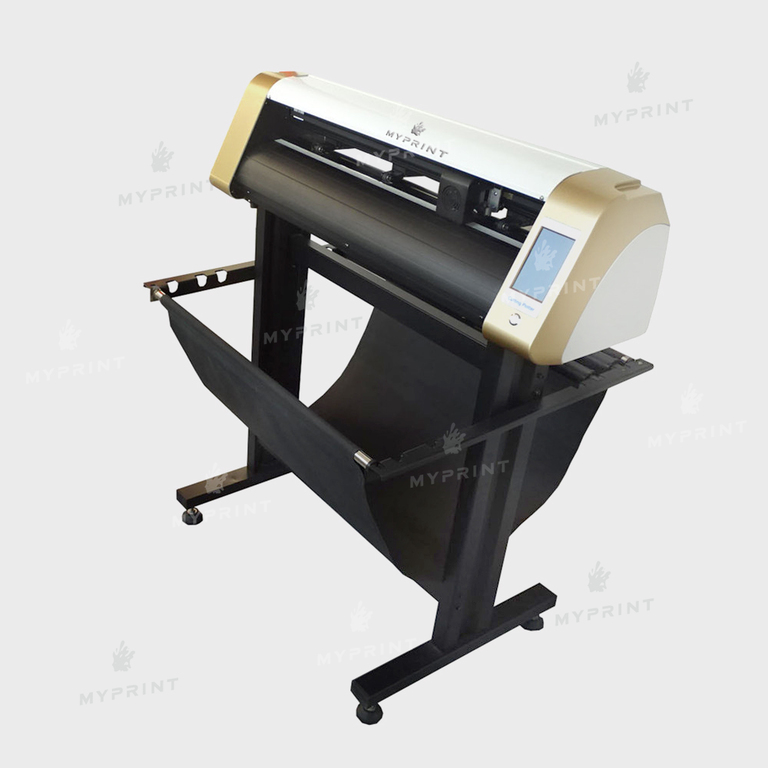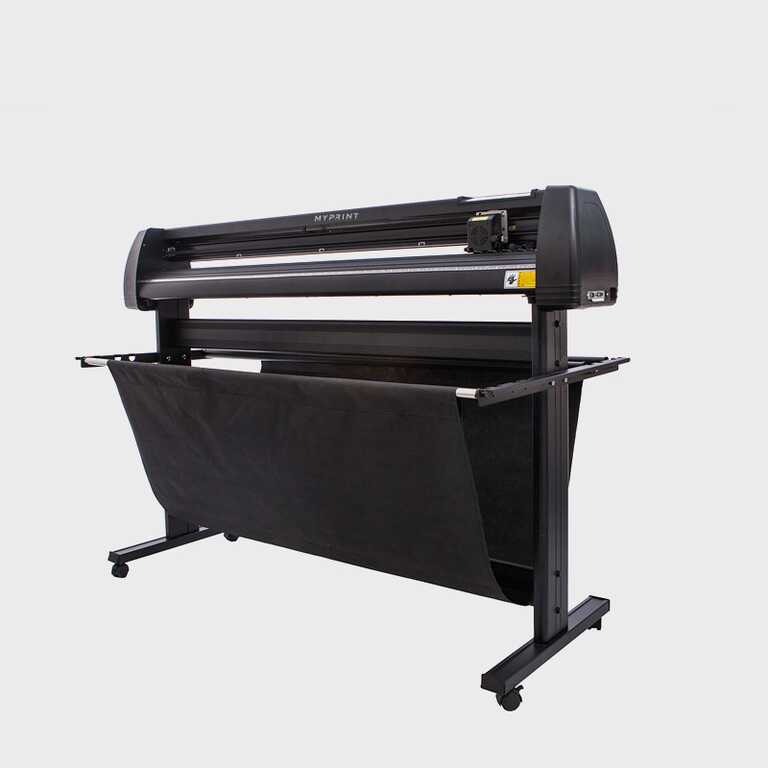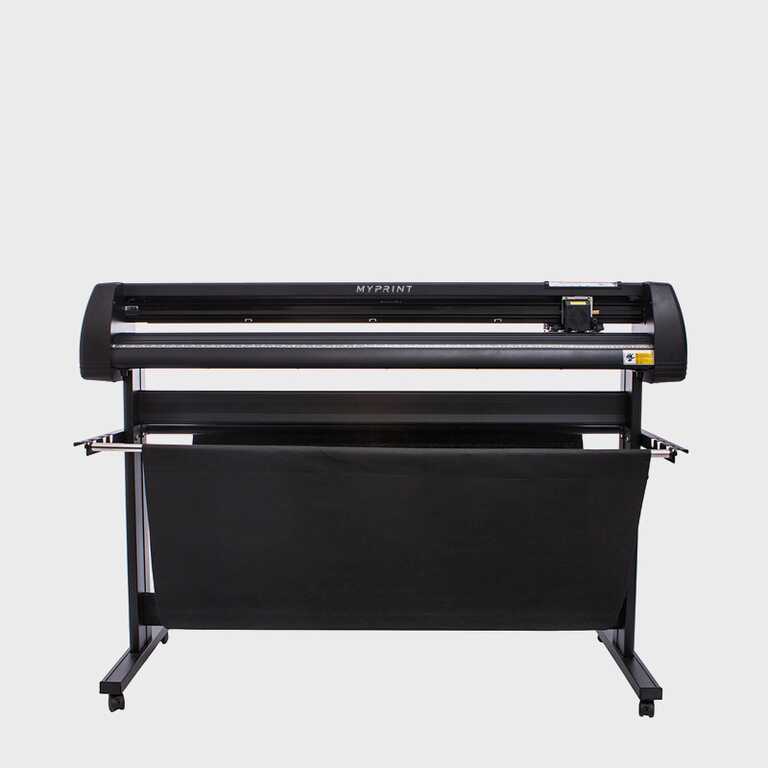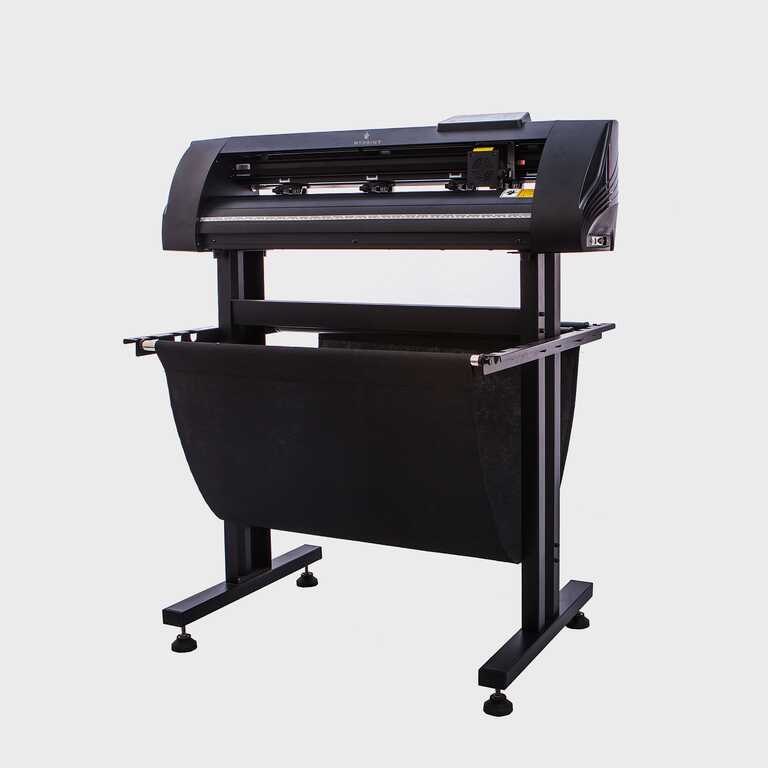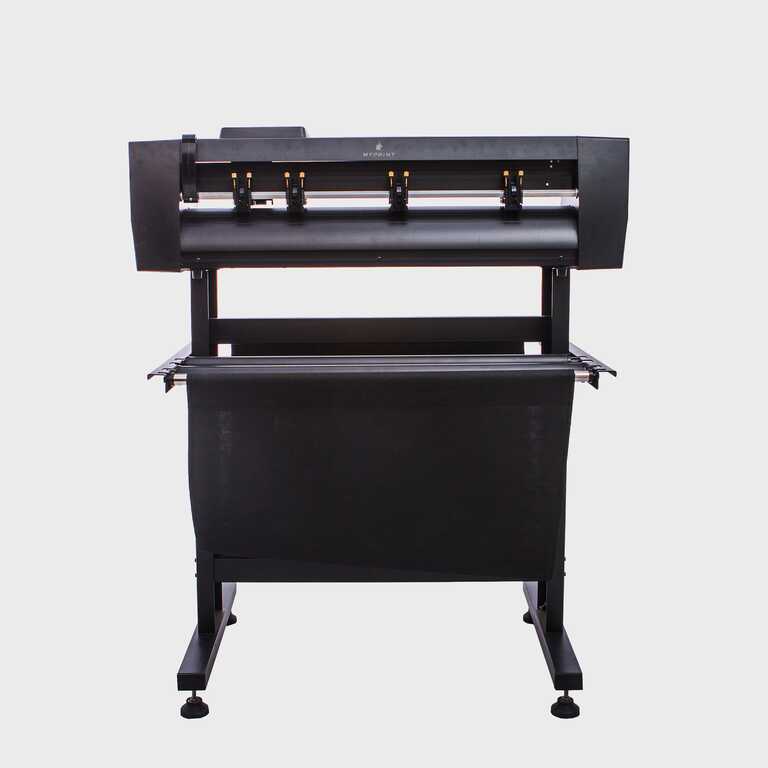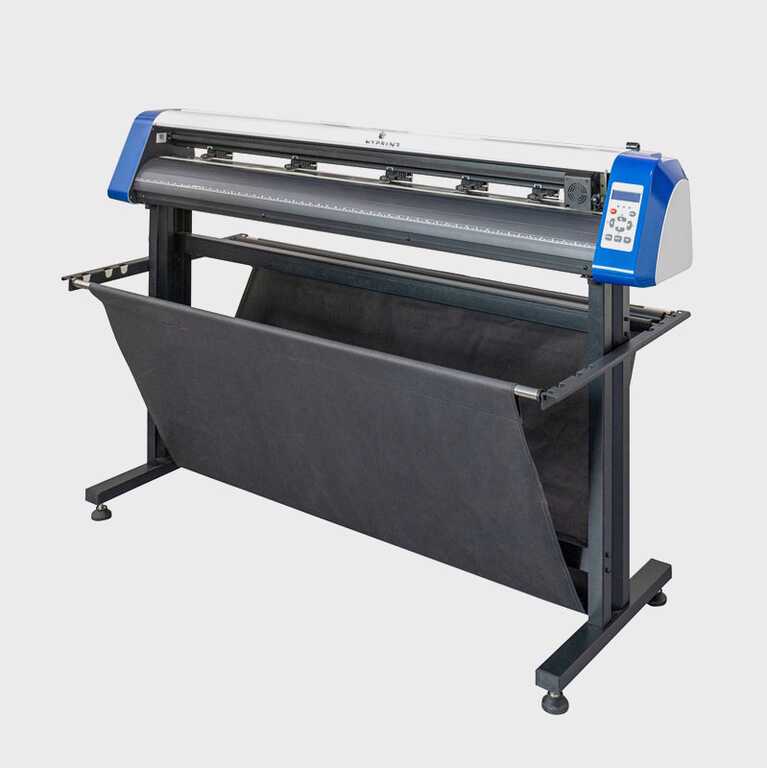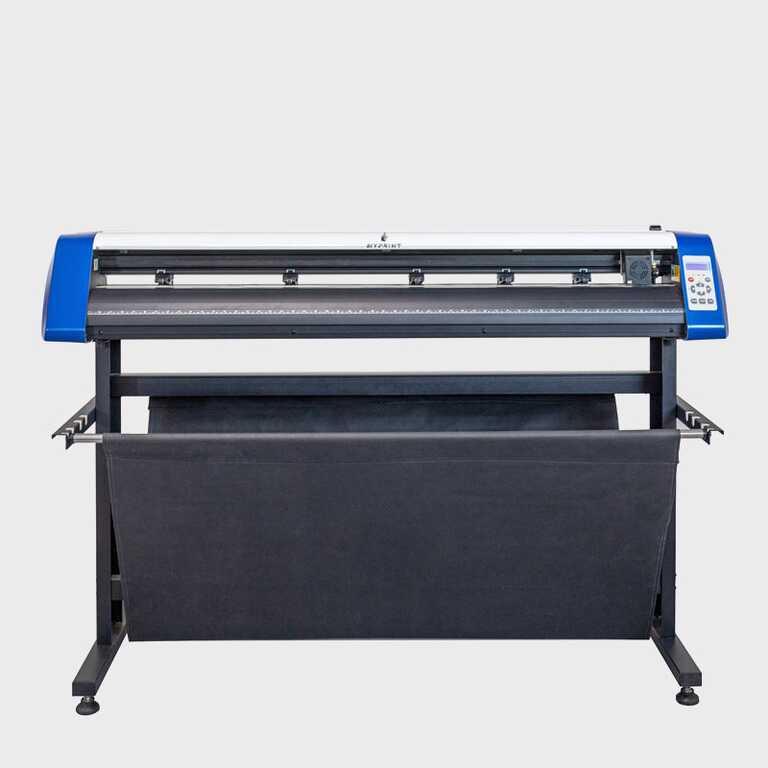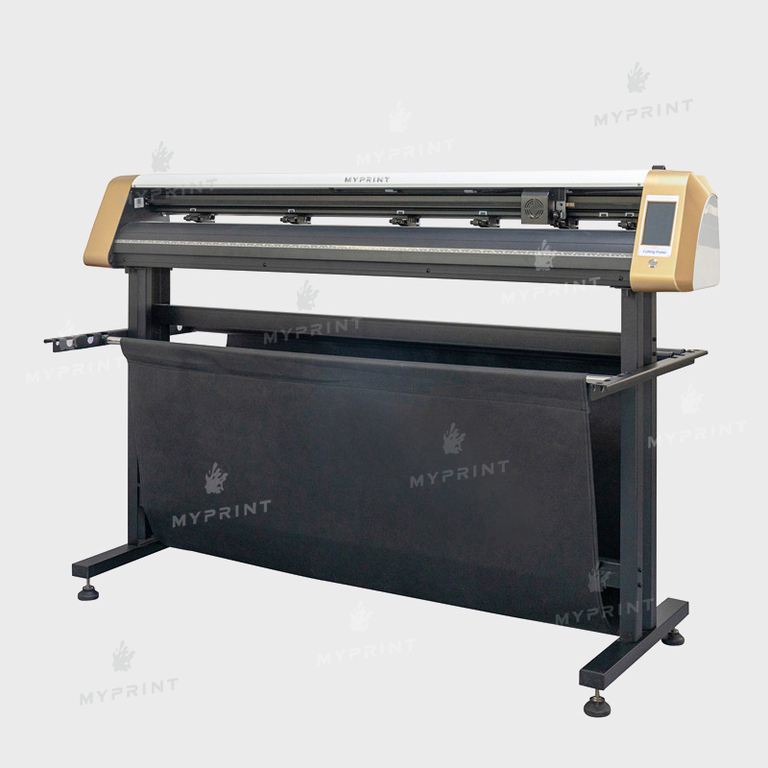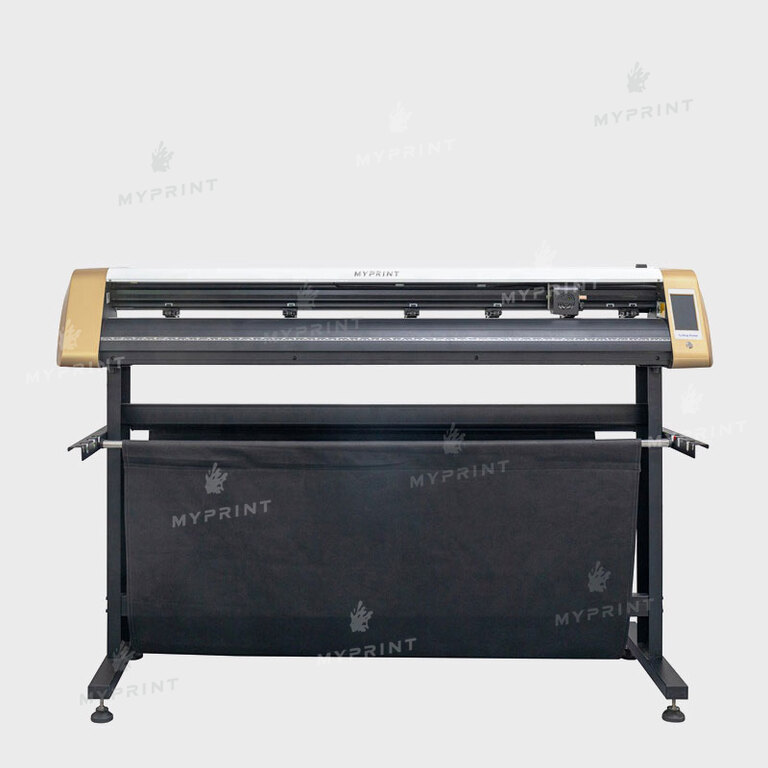Cutting plotters (boats)
Cutting plotters or cutters are specialized equipment designed for cutting details or images of any size from thermal transfer film, thermal transfer paper, regular application film, fabric, cardboard, felt, foil, and other consumables. The device significantly saves time in the production of complex orders, mass production of advertising or souvenir products.
How a cutting plotter works
A cutting plotter can be compared to a regular printer, which doesn't print an image on material, but cuts it out instead. A convenient feature is the ability to adjust the pressure force and depth of the knife's immersion in the material. This makes it possible to either completely cut out the image or score the material to the backing.
The cutting process is controlled by a computer program. The cutter moves along clearly defined marks and lines. This allows for the creation of images of the most complex designs and configurations.
Types of cutting plotters
Roll-fed - the basic configuration includes a drum that is responsible for feeding the material. Pressure rollers control the fixation of the material and its positioning in relation to the knife.
Flatbed - allows for the attachment of sheet material to the table. The image is cut out by a knife that is attached to the top of the unit and moves along a specified trajectory using a special carriage. Cutting plotters can differ in size. The dimensions of the cutting part can be different.
Desktop cutting plotters are designed for cutting small blanks from A3 to A5 format. A good option for small or medium-sized businesses, for those who are just starting out.
Wide-format cutting plotters work with a wider range of sizes. They work with images from A0 to A6 formats.
Where can cutting plotters be used?
In thermal transfer and sublimation transfer of images onto fabric.
In printing.
In the advertising business.
In the creation of engineering projects.
In the textile industry for the production of patterns and templates.
In the souvenir industry - for packaging, making decorative elements or future unique gifts.
In the production of signs, billboards, signs, and pointers.
What affects the price?
First and foremost, the manufacturer affects the formation of equipment cost. The more well-known and established the brand, the more expensive the machine will be. It should be understood that in this case, you are paying for the quality of the equipment and its effective operation, as such companies carefully monitor the level of production, implement innovative solutions and care about the convenience of users.
The cost is affected by the capabilities of the equipment. The wider the range of work, the more expensive the plotter will be.
The ability to work with one image format or several, including wide-format A0.
Can you do without a cutting plotter?
Precision - thanks to the fact that the plotter guarantees optical precision, you have a unique opportunity to reproduce even the smallest and most complex images.
Maximum speed of operation - most models have a speed of at least 1000 mm/s. The quality remains consistently high.
A wide range of materials used - in addition to working with a large number of resources, the equipment is designed for processing consumables of different thicknesses. The cutting area of each plotter is individual and ranges from 300 mm to 1.9 m.
The ability to adjust the depth of immersion and the pressure force of the knife is very important when working with consumables of different thicknesses.
The ability to withstand increased loads during daily busy work.
FAQ about "Cutting plotters":
We suggest you familiarize yourself with the offers from the following categories:
We recommend paying attention to the following products:

